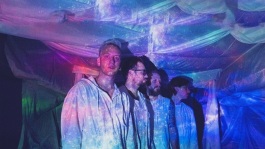Trending News|August 23, 2014 12:50 EDT
Celestial Events 2014: Dates of Meteor Showers, Full Lunar Eclipses, Partial Solar Eclipses
Meteor showers, total lunar eclipses, partial solar eclipses, and planets at their highest points in the sky, can be expected this year as the stars have a lot to offer in terms of astronomical events visible from Earth.
On October 8, a full lunar eclipse will occur leaving the moon overcast with a faint red hue. This event happens when the Earth's shadow falls upon the moon. The red hue results from the Sun's position directly behind the Earth, as it fully illuminates the moon and causes its distinct discoloration.
October 23 is set for a partial solar eclipse, when the moon rotates in front of the Sun, as seen from Earth. This time around, up to 80% of the Sun will be blocked by the moon for a short period of time. This eclipse will be most visible from areas in North and Central America.
Beyond that, some spectacular meteor showers are going to occur from October 22-23. The Orionids meteor shower happens when the Earth passes through the debris of Comet Halley. Viewers will notice streaks of light in the sky, as debris catches fire and burns away while entering the Earth's atmosphere.
However, what's more remarkable than that, is the upcoming Geminids meteor shower, during the nights of December 13-14. The Earth will pass through the debris of 3200 Phaethon, and display brilliant streaks of light across the sky.












